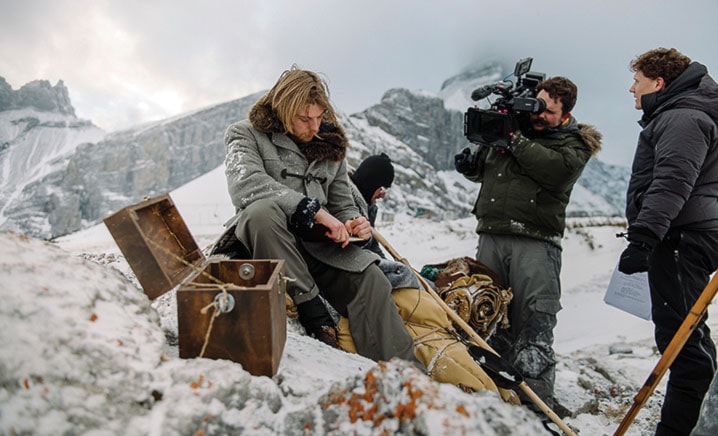Filming at the peak of a mountain doesn’t happen every single day.
Director Justin Brunelle, a Red Deer College motion picture arts graduate, covers mountainous territory in his 10-minute short, One, One Thousand.
“It was an idea that I always had when I am driving through the mountains,” said Brunelle. “I always think, who is the first person to be here or explore these territories.”
The storyline follows a 19th century photographer and assistant who scale a mountain to take one of the first summit photographs in the region in the winter of 1894. It is an all-Canadian crew featuring lead actors Mark Kandborg and Byron Mayberry. The cinematographer is David Baron.
“In our day and age, we are so driven by what’s the biggest achievement right now,” said Brunelle. “The first man on the moon was a huge achievement for us. At that time in the 1890s, which wasn’t really long ago, getting to the peak of the mountain and getting a photograph for the rest of the world to see would have been a pretty huge thing.”
The filming was done over nine days in Edmonton, Calgary and Longview. Forty people worked on the film and a small crew of nine worked on the mountains.
The main mountain scenes were shot on Fortress Mountain in Kananaskis. The same mountain was used in the movie The Revenant. When Brunelle was shooting his film, there was a Hollywood crew shooting for the upcoming movie.
“Nine days is a lot for a 10-minute film but considering we were all over Alberta and filming in some really remote locations,” said Brunelle.
There was a lot of things that goes into technically filming on a mountain, he said.
“Filming at 8,200 feet in the air is a little bit different than filming downtown Edmonton or downtown Calgary,” said Brunelle. “Using Fortress we were very lucky, it is well known for movies.”
A safety, transport and avalanche control guided the nine-person crew to the peak the mountain.
“They drove us up to what they called base camps up there,” said Brunelle. “We took sleds for about half an hour to go as high as we could using the machines. But we had to go on foot with all our camera gear and props to where we wanted to film.”
Brunelle said they had to hike up about 100 metres higher but no vehicles could go up there. It took about two hours to get about 10o metres up with all the camera gear.
“There was a really big scene where they are climbing up an extremely steep slope and they are exhausted,” said Brunelle. “They collapse on the mountains. We scheduled three hours to film that scene. It was at a 45 degree incline. We thought it would take 30 minutes. It took three hours. We were so far behind. We had to reschedule other scenes.”
Brunelle said it was a pretty ambitious project to do in two months with the planning and the filming but he is happy with the final cut.
“It was a challenge,” he said. “It was cold. It was windy. When you’re up to your waist in snow, it’s hard to put the camera down … I think Alberta will be proud for what this is.”
The Moving Artistry Productions film is funded through Storyhive, a Telus production grant program for filmmakers in British Columbia and Alberta.
The film will be available for viewing on Telus Optic TV and Telus YouTube channel and all national Air Canada flights starting on Feb. 28.
crhyno@www.reddeeradvocate.com
